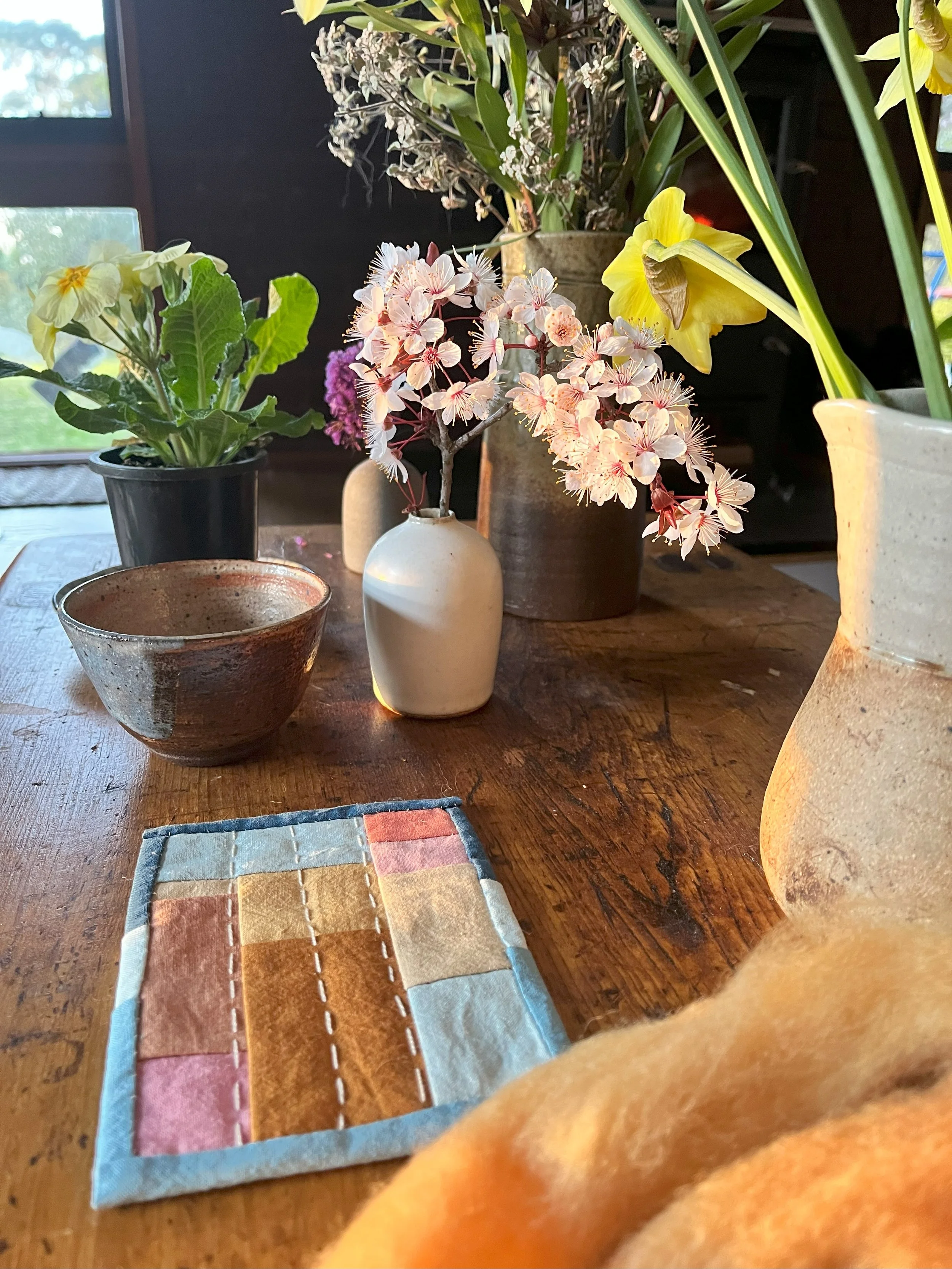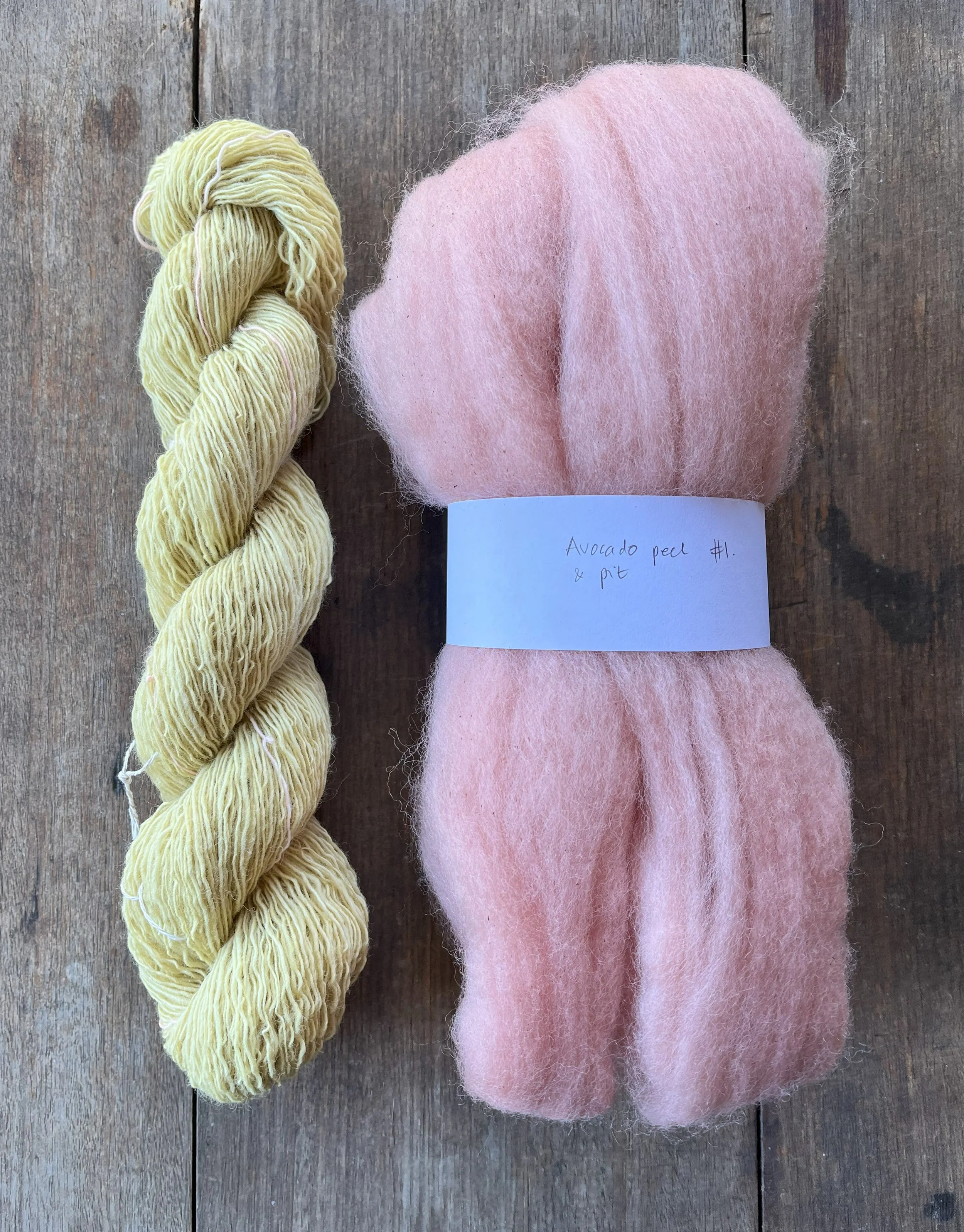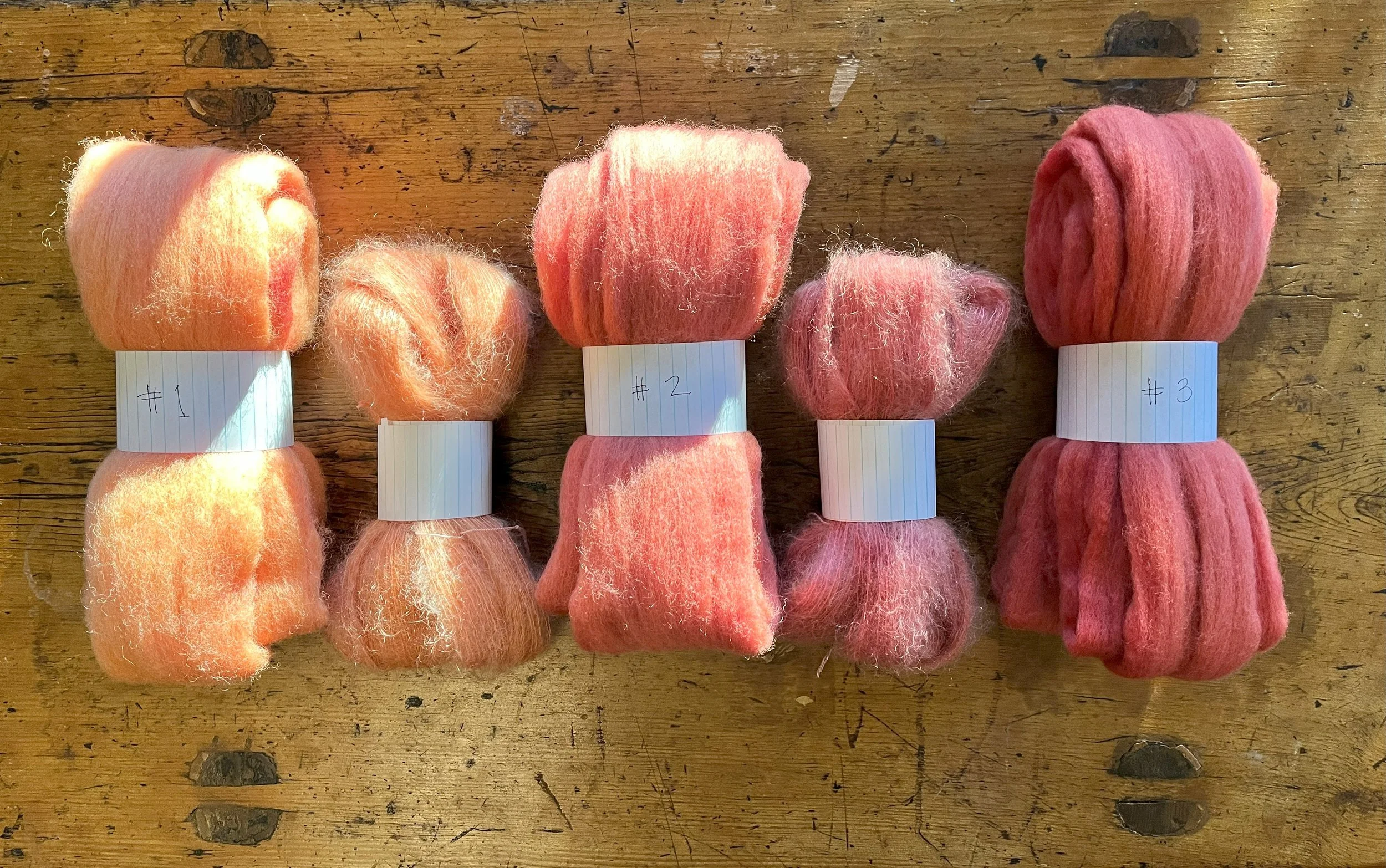
Isager Tokyo Shawl: A Year of Colour Coming Together
A year of colour is gathering on my needles. The Tokyo Shaw designed by Marianne Isager grows slowly, two fine threads moving together, hand-spun wool and silk mohair, each dyed in small, seasonal batches. Indigo, avocado, onion skin, kariyasu: tones collected across the year, now meeting in one gentle, shifting fabric. It feels like watching the seasons return in cloth.

My Favourite Winter Jersey
Spun from natural Corriedale in soft shades of brown, grey, and white, this handspun jersey has become my favourite winter piece, warm, simple, and full of quiet texture. I start spinning during the Sydney to Hobart race, ply through summer, and knit It’s Not a Sweatshirt by Knitting for Olive in time for the Bendigo Sheep and Wool Show. A jersey that carries the whole season in its making.

Red Earth: Dapple and Deep
A quiet study in warmth and texture — Red Earth Dapple and Deep side by side, from dyed wool tops to hand-spun singles. A photo story of colour, rhythm, and the soft transition from earth to fibre.

A Study in Reds
For the past month and a half, my studio has been glowing in red, from deep, velvet rose and Bordeaux to the soft blush of cherry petals. Inspired by natural dyes like suōh, cochineal, madder, and eucalyptus, I’ve explored the full warmth and depth of this spectrum, creating layered colour families that move between passion and calm.
Now, as spring turns towards summer, the palette begins to cool — but for a moment, here is the world seen through red: rich, radiant, and alive.

The Making of a Madder Scarf
Two scarves, one dye pot — both born from the warmth of madder root. One deep and rusty, the other a sunlit orange, each shaped by the slow rhythm of stitching, dyeing, and unfolding. The Making of a Madder Scarf traces the quiet alchemy of wool, hand, and natural colour — and the beginnings of what I am creating at Craft Spin Lab.

What lingers in colour
Colour lingers in wool long after the dye bath is emptied. Not only the molecules of leaf or bark or cochineal, but also the memory of the day: the scent of the pot, the patience of waiting, the quiet attention of hands. Natural dyeing leaves traces of place and time, stories woven invisibly into fibre.

A Tiny Quilt for a Cup of Tea
A tiny quilt, stitched from scraps of naturally dyed cotton — golden onion, soft madder, three shades of indigo. Just big enough for a cup of tea, and made to be slow, simple, and beautiful.

Onion & Avocado: Colours from Scraps
From kitchen scraps to glowing colour, onion peel and avocado skin turned my wool into shades of sunset, soft pinks and golden rusts, just in time for spring.

Avocado Pink and Kariyasu Yellow
A pot of avocado peels, a skein of silk mohair, and a bright yellow wool top spun from last weekend’s dyeing - today is one of those golden days in the dye studio where colour, fibre, and rhythm all come together.

Suoh (蘇芳) - Sappan wood dye
Dyeing with Suoh (蘇芳) - sappan wood - proves full of surprises. I begin with 100g of wood chips and work through four dye baths, each one revealing more of the colour's hidden depth. From the softest peachy orange to deep carnation pinks and a final unexpected maroon-purple, this dye journey becomes a slow unfolding of lessons in heat, timing, and patience. The hues deepen with each extraction, glowing gently across the wool tops and silk-mohair.

Third Time Lucky: The Yoke That Finally Worked
With focused attention to stitch counts and increase placement, I cast on for the third time—methodically working each row with care. My fine, two-ply handspun held up impressively through multiple rip-backs and reknits, and at last, the yoke came together cleanly and with quiet strength.

A Quiet Battle With the Yoke
Exhausted but drawn to the work, I sat with my knitting—unravelling, trying again, and puzzling through a yoke that just wouldn’t click. This post captures the quiet frustration and persistence of those early attempts, before something finally began to make sense.

Handspun Beginnings: A Quiet Jersey Project
Spun through the quiet turn of the year, this jersey begins with fine handspun wool and silk mohair—soft, misty, and deeply intentional. A simple pattern becomes the frame for precious materials and slow making.

Weaving a Palette from the Victorian High Plains
Blending lac, madder, and natural brown wool—spinning the colours of the Victorian High Plains into thread for a weaving project.

Blending natural dyed wool using a hackle

Dyeing the Deepest Indigo Blue
The first step in the dyeing process—achieving the darkest, richest blue possible using natural indigo.

The Blues of Land and Sea - A Hand-Spun Experiment
On the first day of autumn, inspired by the deep blues of sky and sea, I’m beginning a new spinning experiment. Using natural indigo and later commercial dyes, I’ll blend and spin a range of luminous blues—capturing the richness of ocean waves and the shifting tones of a bright autumn sky. This project will explore the interplay of colour, texture, and fiber, using my new hackle to create depth and variation in the yarn. First, I’ll work with natural dyes, then compare the results with commercially dyed blends. Follow along as I translate nature’s blues into fiber and yarn.

The Origin of the Word ‘Hank’ in Yarn Craft
Ever wondered where the word hank comes from? This fascinating term, used to describe a coiled bundle of yarn, has its roots in Old Norse and Middle English. Understanding its history connects us to the deep traditions of textile craft. Read on to discover how the hank has stood the test of time in fiber arts!

Designing with Nature: A Deep Dive into Textural Minimalism and Architectural Woolwork
Exploring the intersection of fiber, nature, and architecture, this project delves into the textural minimalism of fine hand-spun wool, inspired by the towering elegance of Eucalyptus regnans. Using naturally dyed, softly muted yarns, I am crafting two pieces—a knitted design with structural yet fluid forms and a woven textile with understated depth. The goal is to capture shadows, subtle movement, and quiet sophistication, balancing the organic softness of wool with an architectural crispness. This work is an invitation to consider the mindfulness of making, the presence of craft in our lives, and how textiles can embody both stillness and transformation.

A Palette Rooted in Place: Natural Dyeing and the Inspiration of Tamba-fu
Rooted in tradition, shaped by nature—my work is a journey through colour, fiber, and place. Inspired by the deep heritage of handwoven textiles like Tamba-fu and the rich hues drawn from eucalyptus and other local plants, I create naturally dyed, hand-spun wool that connects the past with the present. Each piece tells a story of landscape, craft, and slow-making, inviting you to explore the beauty of handmade textiles